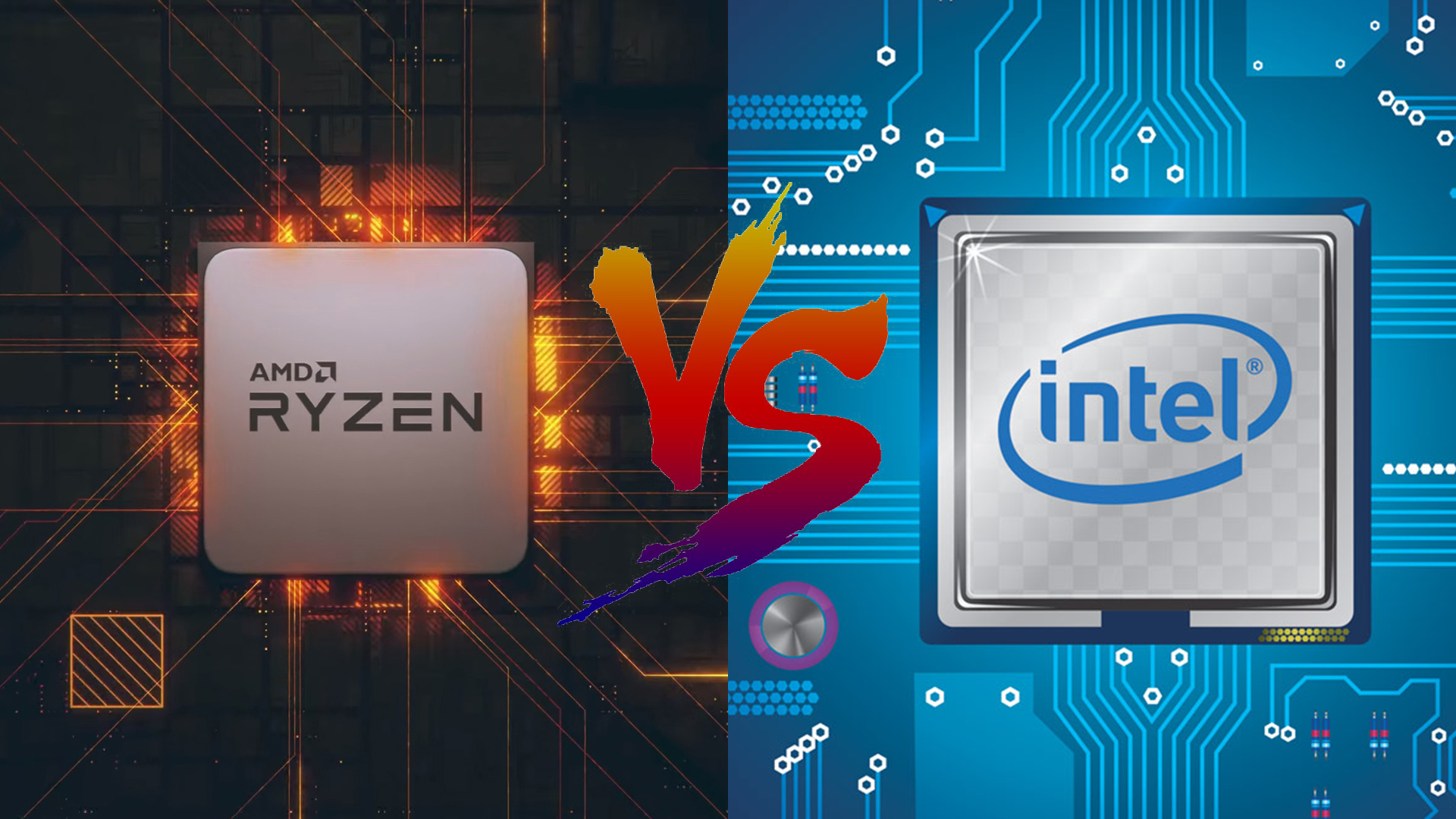The competition between AMD and Intel has been getting tougher and tougher with both presenting their very own and unique lineups. Although while selecting processors from either, one needs to keep a few things in mind.

AMD has cheaper chips and is thus better for entry and mid- level users who don't need that advanced processor. Intel on the other hand have very fast high end chips and their premium chips are best for pro users.
For decades, Intel dominated AMD, and it was considered the brand leader in the CPU market. However, things turned around for AMD when they released the Ryzen 7 series, which was made to rival Intel's Core i7 offerings. AMD then launched the Ryzen 3 and 5 models. Their latest offering is the Ryzen9 3950X, their first 16 core 32 thread processor for mainstream use. Intel didn't sit on the sofa waiting. They released the 8 core 16 thread Core i9-9900K. Intel's Core processor series has 18 cores and 36 threads making it the most suitable choice for high level users.
Best Speed: Intel
CPU performance is measured in terms of clock speed or clock rate. This is expressed in gigahertz (GHz), and it indicates to you how fast the CPU can process data. A higher clock rate, better the task performed by the CPU. Intel is known to have the upper hand in terms of speed. However, certain Ryzen models are almost as fast as the Intel processors especially for entry and mid level.
Best Overclocking: AMD
Overclocking allows you to run your PC's clock rate at speeds beyond the manufacturer's recommendations. There are some chips that are locked, which means the manufacturer has designed them to run only on certain clock speeds. However, there are also chips that come unlocked and allow you to overclock them.
AMD wins over Intel when it comes to overclocking. This is because AMD CPUs come unlocked, even on affordable models. Consequently, they can be overclocked, as long as the motherboard chipset is also capable of overclocking. In contrast, Intel chips are only capable of overclocking if they have "K" at the end of the model number. These tend to be priced higher.
Most Cores: AMD
A core is a processor that receives and executes instructions. The more cores a CPU has, the more tasks it can handle, and the more efficient it is. AMD's main selling point is having a high number of cores. On the other hand, Intel has traditionally foregone large core counts in favor of hyperthreading. With hyperthreading, the CPU divides physical cores to virtual cores or threads to do multiple things at once. For example, a four-core Intel CPU can turn into an eight-thread core with hyperthreading.
AMD and Intel core counts stand toe-to-toe at the entry-level. The same is true for high-end desktop (HEDT) models meant for enthusiasts. AMD core counts come out on top when it comes to their mid-end offerings. The Ryzen 5 chips have four to six cores with hyperthreading, while Ryzen 7 chips have eight cores which is more than the Intel processors.
Best Performance: Toss-Up
When you compare AMD vs Intel chips, AMD CPUs are great at multitasking, while Intel CPUs accomplish single-thread tasks better. Tasks that use multiple cores include photo and video editing programs, 3D modeling and rendering programs, graphics-heavy games, and demanding productivity apps.
For 3D CPU rendering software, like V-Ray, AMD is a better choice.Ryzen 9 3900X renders content the fastest at 47 seconds. The Core i9 7900X rendering at 60 seconds. Understandably, since most people who use general productivity apps will see better performance from AMD chips. Figures reveal that the Ryzen 7 2700X and 1800X scored higher than the Core i7-8700K when it came to compressing zip files.
Best Price: AMD
Nowhere is the AMD vs Intel battle more pronounced than pricing. Being the market leader for decades has allowed Intel the power to drive up their prices. AMD's main draw is its aggressive pricing strategy. AMD offers more cores and better performance at a lower cost, which is challenging Intel's ability to charge premium prices. Since AMD released the Ryzen series in 2017, Intel has had to introduce products at different price points to avoid price cuts.
At the lower end, AMD leads the game.. One will notice the price difference even more in the mid-range models. The AMD Ryzen 5 2600X Processor with Wraith Spire Cooler, for example, retails for $150(INR 11000). In contrast, its counterpart, the Intel Core i5-9600K, retails for $250(INR 18000). On the high-end side of the spectrum, Intel's flagship offering, the Core i9-9900K, costs $550(INR 40000). On the other hand, its AMD equivalent, the Ryzen 9 3900X, costs $430(INR 31500).
Ultimately, deciding between AMD vs Intel depends on your preferences, specific use case, and budget. However, a good rule of thumb to follow is to stick with AMD for low-end to mid-range chips, and Intel for high-end, energy-efficient models.